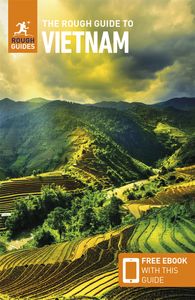Travel advice for Vietnam
From travel safety to visa requirements, discover the best tips for traveling to Vietnam
- Crime and personal safety tips Vietnam
- Eating and drinking in Vietnam
- Getting around Vietnam: Transportation Tips
- How to get to Vietnam
- Travel Health Vietnam
- Shopping tips for Vietnam
- Sports and Outdoor activities in Vietnam
- Travel Tips Vietnam for planning and on the go
- Best time to visit Vietnam
- Vietnam Weather in September
- Vietnam Weather in November
- Vietnam Weather in June
- Vietnam Weather in July
- Vietnam Weather in December
- Vietnam Weather in August
- Vietnam Weather in January
- Vietnam Weather in February
- Vietnam weather in March
- How to get from Hanoi to Halong Bay
- How To Get From Hanoi To Da Nang
- How to get from Hanoi to Sapa
- Vietnam Weather in April
- How to get a Vietnam visa
- Activity
- Nature & Wildlife
- Festivals & Events
- Vietnam
- Travel Tips
- Travel Advice























